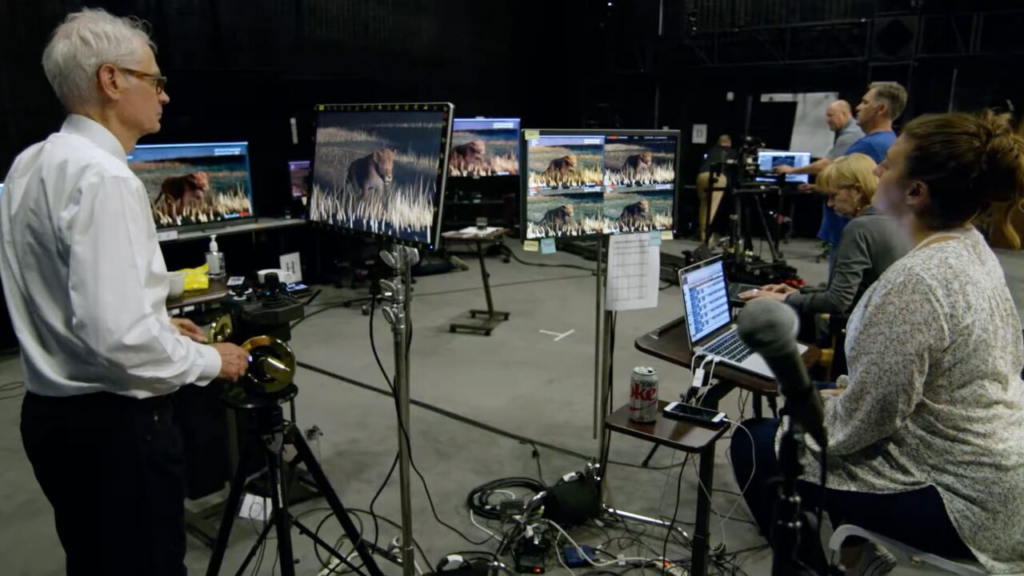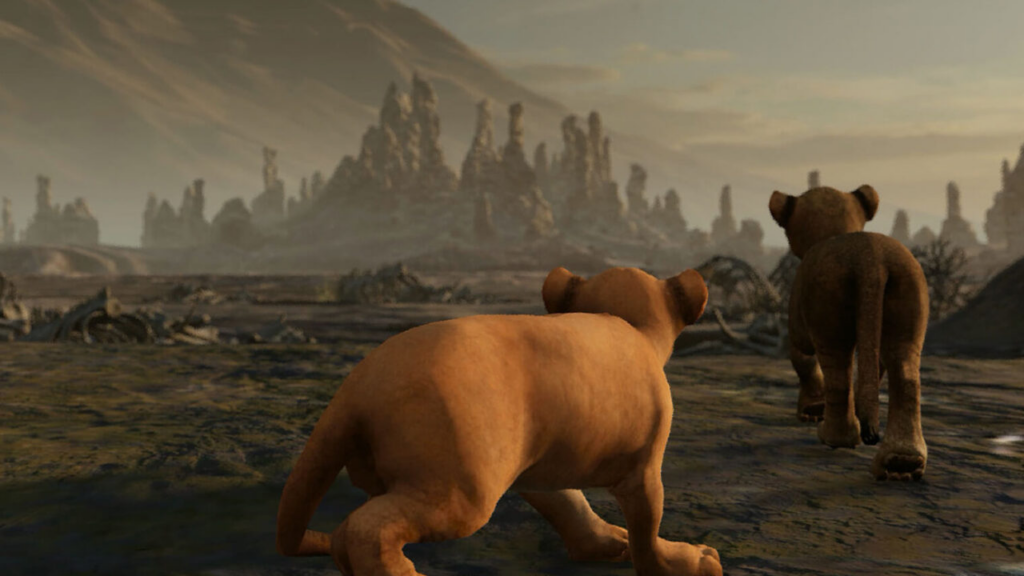In 2019, Jon Favreau sought to remake the Disney classic Lion King. His vision: retell the story of Simba but this time with a cast of real animals voiced by real actors set in the real savannahs of Africa.
So Favreau and his team packed all their cameras and other equipment, flew to the Serengeti, met with lions, zebras, elephants, and other animals to shoot…reference shots. The team then flew back to a studio in Los Angeles and met with artists, computer technicians, and other virtual production specialists to recreate everything through CGI.
(Fun fact: Favreau inserted one real frame in the film as a kind of a prank to see whether viewers would be able to tell the difference. If you’ve seen the movie, do you know which shot it was?)

The “live action” Lion King featured 63 different species of animals, 9063 characters and a whopping 600 million individual hair strands. If you’ve done any 3D modeling or animation, you have an idea how difficult it is to create realistic fur or hair. Motion Picture Films (MPC), the studio that handled the VFX for Lion King, estimates that rendering all the animals and landscapes and movements for the film took 77 million total hours spread across multiple machines in MPC’s own cloud render farm.
If you were to render Lion King using a single computer today, even the latest Macbook with M2 chips, it would take around 8,790 years to render the whole film. That’s probably enough time for some of the animals to evolve into different species.
But with cloud rendering, MPC was able to render the film in 18 months. MPC’s 3D artists sent their working files to a server on their own render farm which handled all the processing needed for MPC’s projects. A render farm is a collection of powerful machines stacked with the latest CPUs and GPUs designed to do one thing and one thing only: render images or scenes for 3D artists.
Needless to say, Favreau’s Lion King remake would never have been possible without cloud rendering.
And this is the power of cloud rendering: speed and cost efficiency. 3D rendering that will have taken years to complete in a single computer are finished within days or weeks, making ambitious visual projects possible. And hardware setups that would take a single user hundreds of thousands of dollars to procure and maintain are made available at realistic prices. You don’t have to be a big commercial studio like MPC to render using cloud render farms; depending on the project, even students can afford to tap the services of a cloud render farm.
Cores = Speed
How are cloud render farms able to drastically bring down render times even for the most complex projects? It all boils down to CPU or GPU cores. To understand how this works, let’s go back to the basics of 3D rendering.
Rendering is the final process in a 3D production. This is the step where your 3D image is converted to a 2D image to be displayed on screens for viewing (TVs, laptops, phones, and cinema screens are 2D surfaces). While this sounds simple enough, it is anything but: converting a 3D image with all the information it contains–colour, shape, texture, lighting, and more–into a 2D image requires performing a mind-bogglingly huge number of complex mathematical calculations. These calculations are done by your CPU or GPU depending on your rendering software. If you have done any rendering on your personal computer, you may have noticed how rendering uses up pretty much all of your system resources and you can’t do anything anymore while the rendering goes on. Rendering is highly taxing for a single CPU or GPU.
But what if you have multiple CPUs or GPUs? Can the calculations be distributed among them and be processed simultaneously to lessen render times?
Yes! That’s basically what a render farm does: it sets up multiple machines called nodes all dedicated to rendering. Each node is composed of multiple top-of-the-line CPUs or GPUs that can share the rendering work among themselves. The more CPU or GPU cores you have at your disposal, the faster your render can be completed. It’s quite a linear relationship: more cores, faster render.
Cloud rendering simply means accessing a render farm service provider via an online interface, one where you can even select the brand of CPUs or GPUs that you want to handle your project and specify your budget.
The cost efficiency of render farms
If the speed comes from the CPU and GPU cores that you get access to via render farms, where does the cost efficiency come from?
It’s also quite simple: setting up and maintaining your own render farm can be prohibitively expensive. The latest processors and GPUs that are best suited for 3D rendering work can set you back upwards of USD$500 for each unit. You then have to buy motherboards, cases, cooling, and power supplies. You’ll easily run in the thousands of dollars just to get started. You then have to spend hours maintaining this complex setup, making sure you have the latest drivers, checking compatibility with your software, ensuring nothing overheats, etc. Every hour you spend in machine maintenance is an hour not spent designing 3D graphics, your real bread and butter.
Trying to set up your own render farm requires serious financial and manpower investment. And the thing with setting up your own render farm is that you’ll have to pony up the same amount whether you are going to render just 100 frames or 100 minutes worth of CGI.
Now, a render farm prices all that in. They provide all the latest processor and graphics cards, all the software infrastructure needed, all the support required to maintain proper operation. Then they factor in the economics (market demand, opportunity cost, etc.) and structure all that down into a price point that’s quite reasonable. In fact, with the efficiency that render farms have achieved these days, you might be surprised at the cost of cloud rendering. For example, a 100-frame project that may take 20 hours to render on your own machine will just take around one minute to render using 100 nodes of a render farm. The price? At low priority, around US$1. At high priority, around US$6.

Final Thoughts
Storywise, Lion King may have nothing in common with Transformers or Pirates of the Caribbean or any of the Fast and Furious films. But 3D production-wise, all these films would not have seen the light of day without the help of cloud rendering. And no matter what worlds or characters or storylines film visionaries dream of next, the stuff those visions will be made of will, more likely than not, be born in the wombs of cloud render farms.


